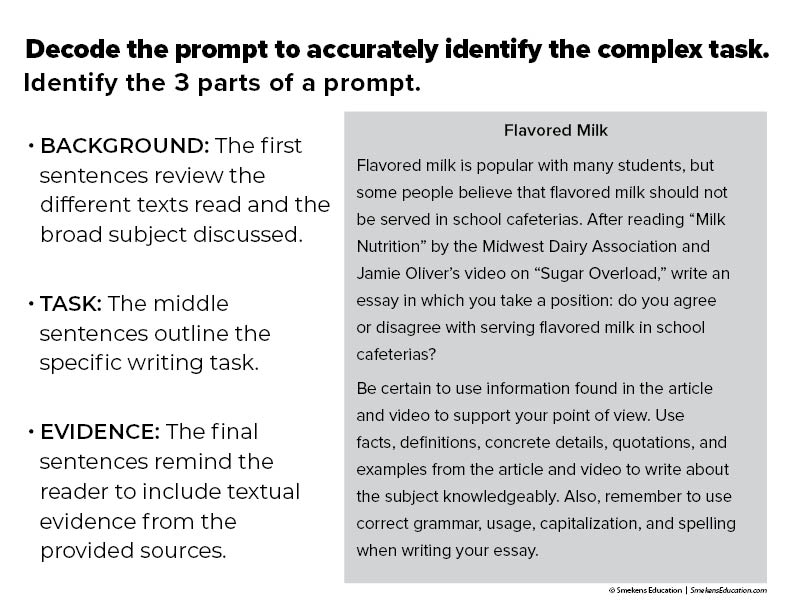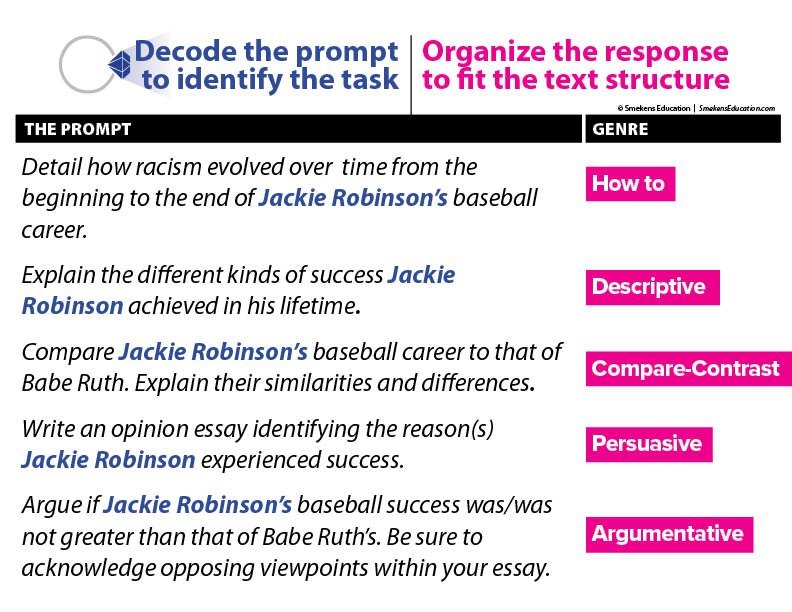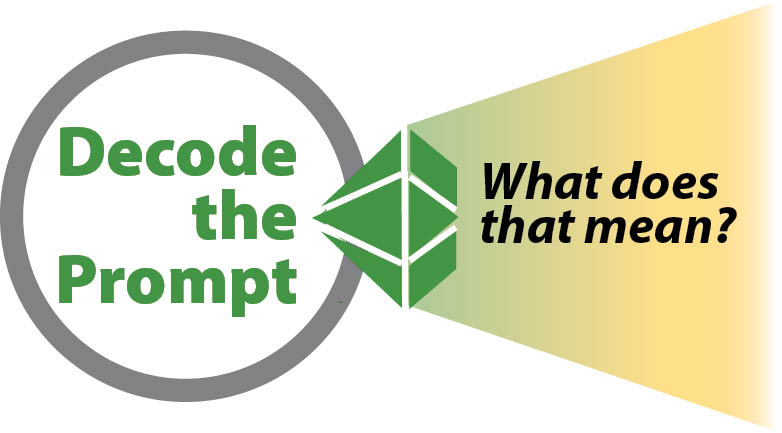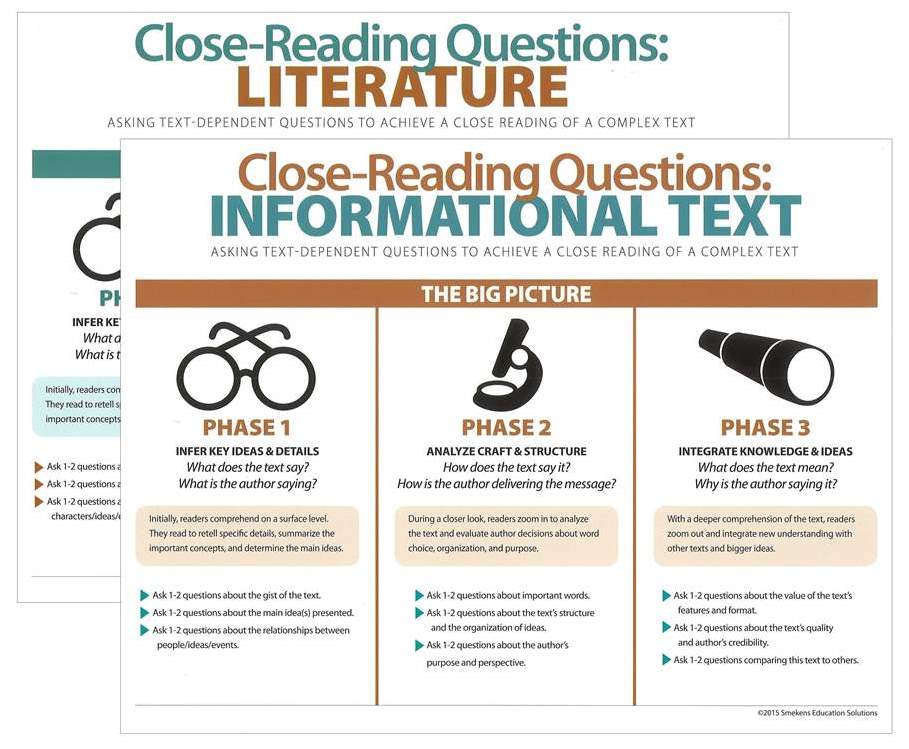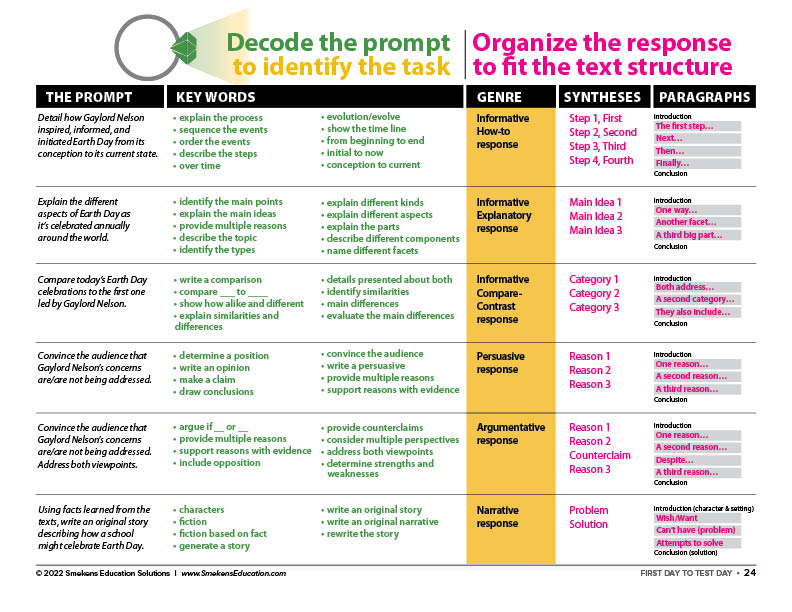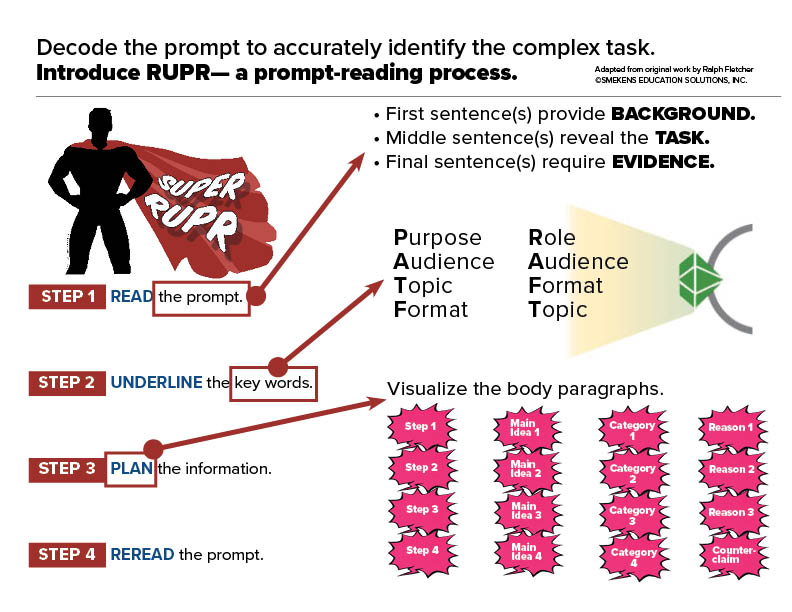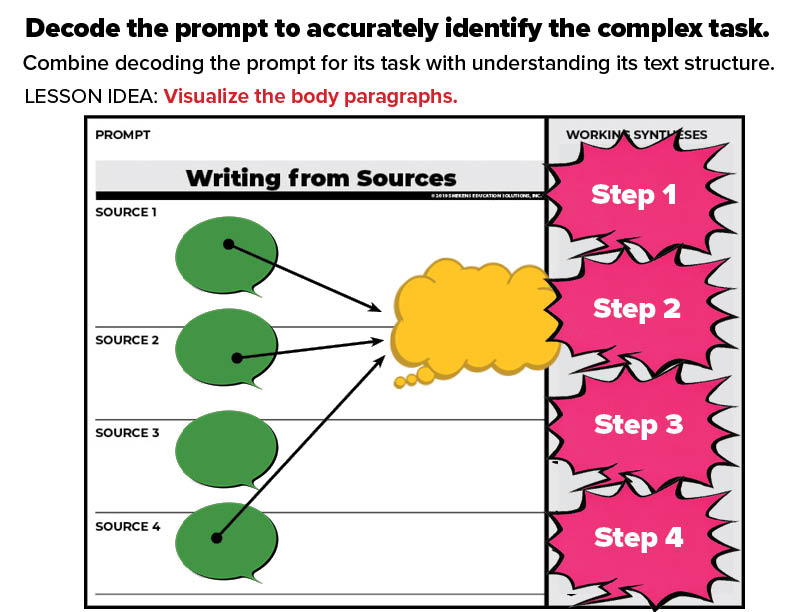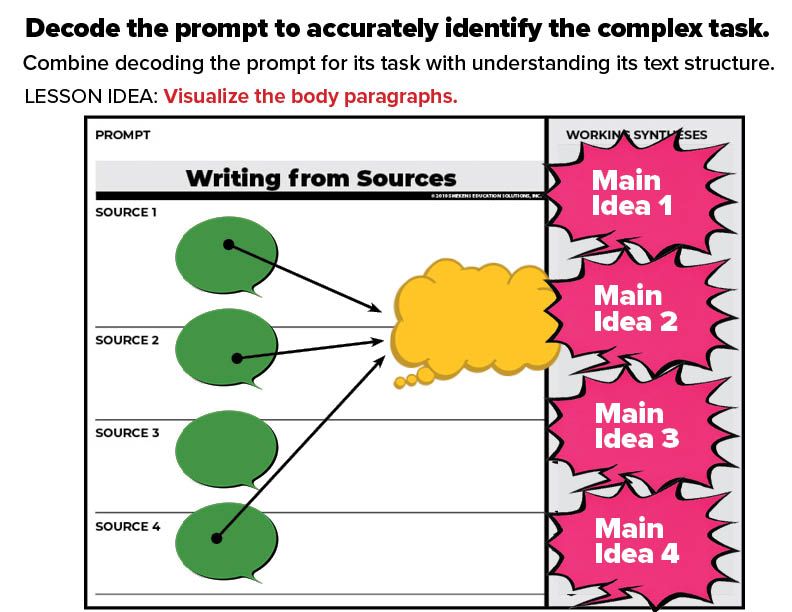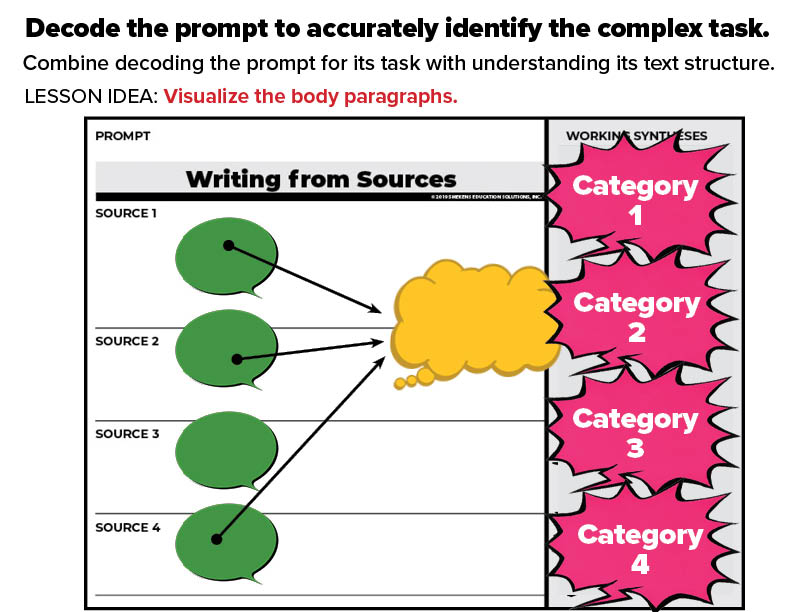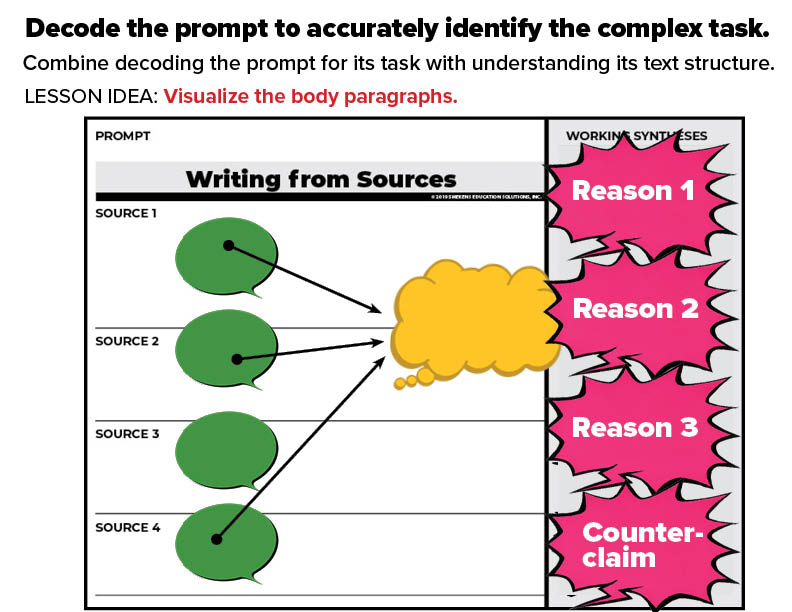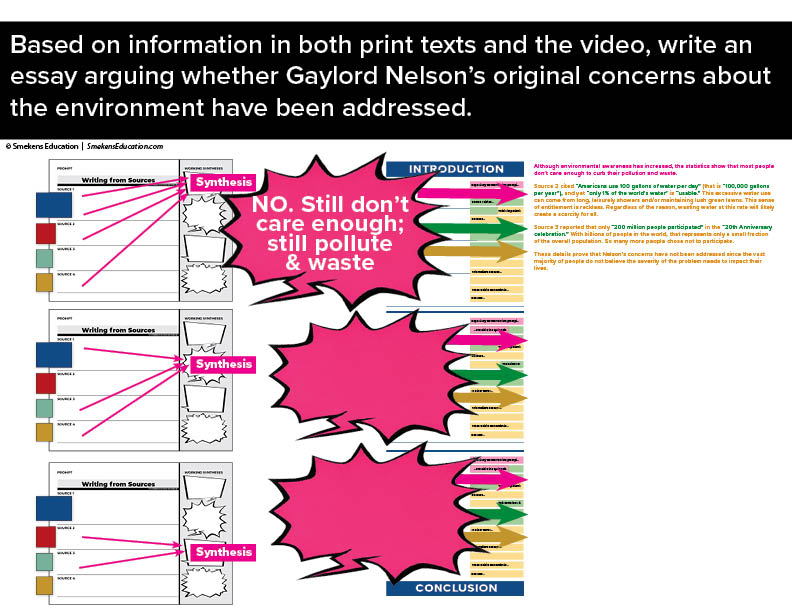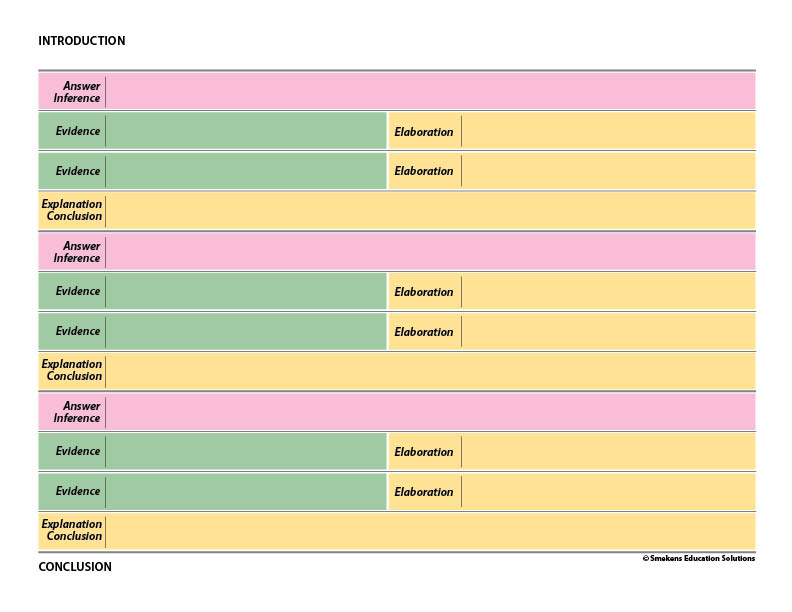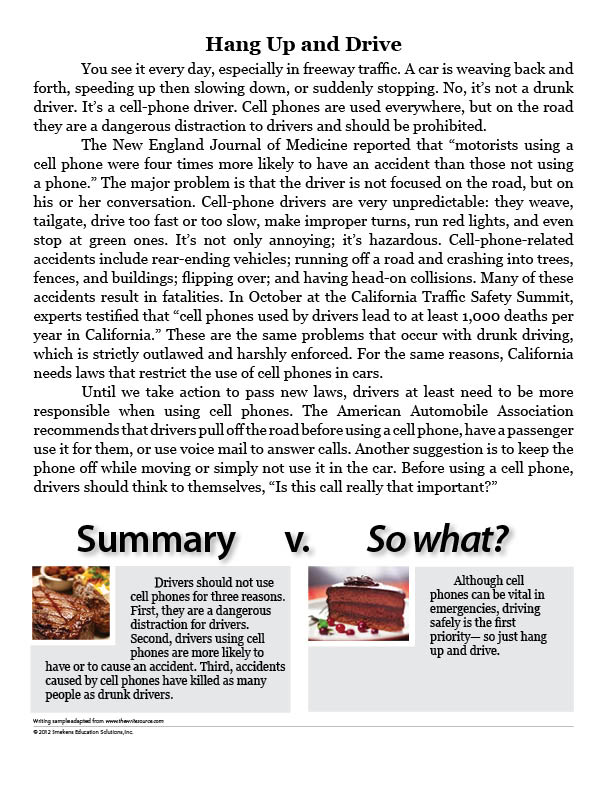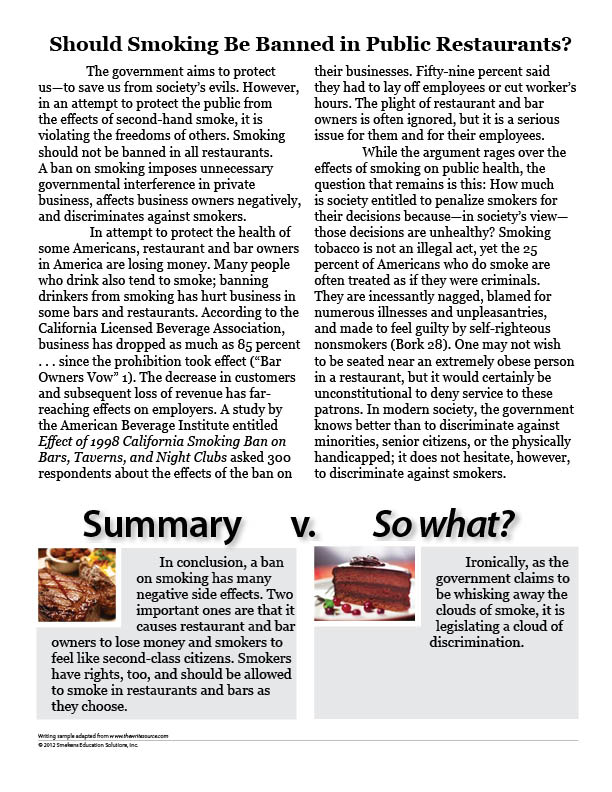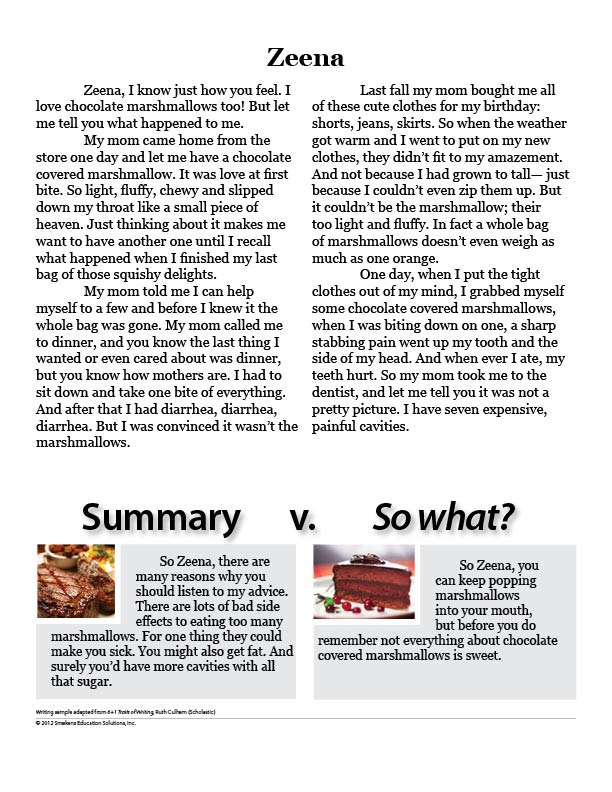First Day to Test Day
A Road Map to Accelerate Student Learning & Prepare for Standardized Tests
SECRET SITE
EXTEND THE RESPONSE
Clarify inference v. synthesis
Determine if the prompt requires inferring or synthesizing.
Select the appropriate tool when preparing for an extended reading response.
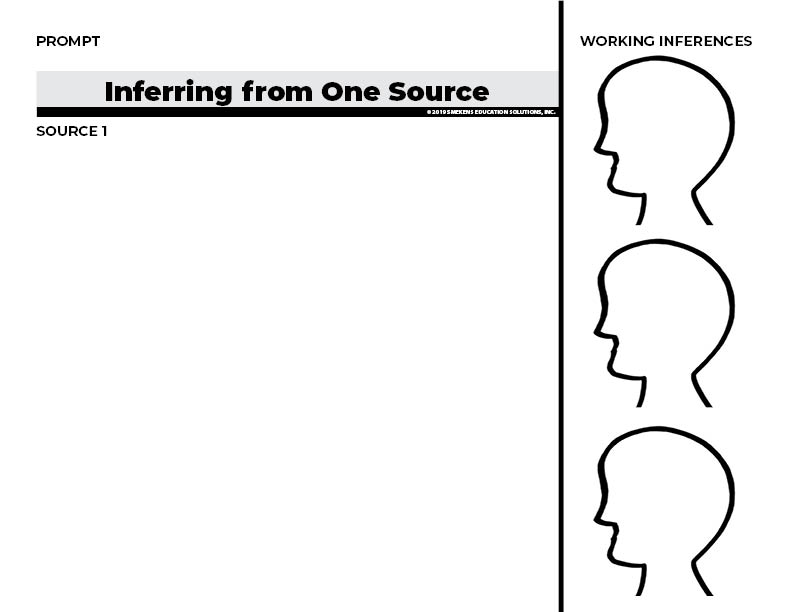
Both a literary analysis and argumentative analysis include the reader evaluating a single text based on multiple factors.
PDF | Google Slide | Jamboard
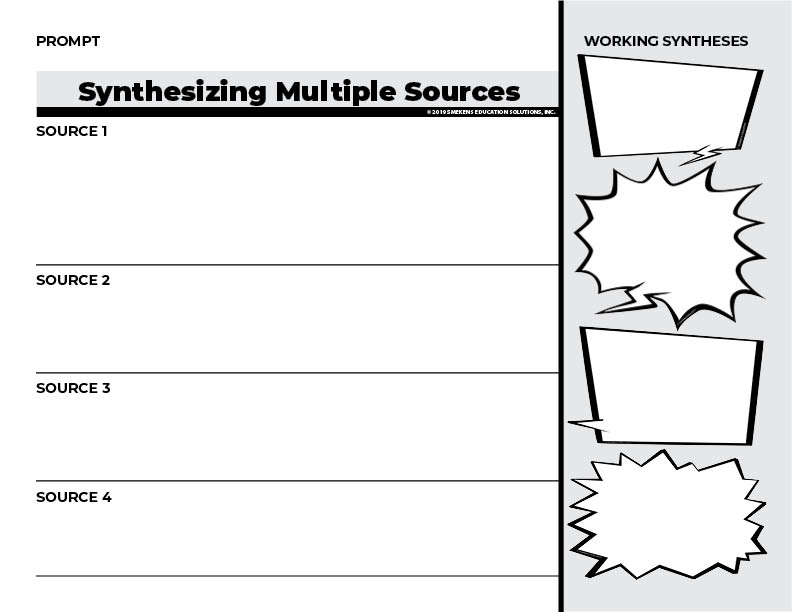
Synthesize multiple ideas by combining info learned from all the texts. Each synthesis needs to be based on evidence from at least two sources.
PDF | Google Slide | Jamboard
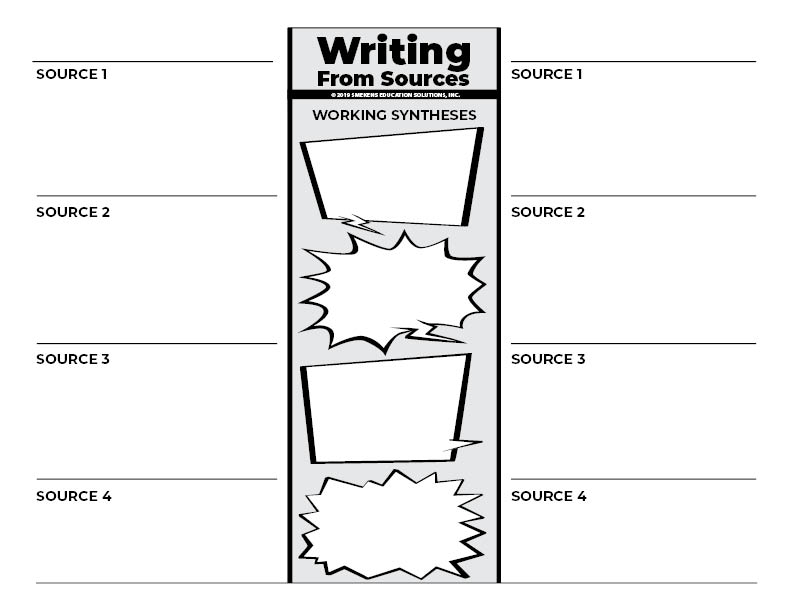
Synthesize reasons per perspective when preparing to write a persuasive or argumentative response.
The Writing-About-Reading Frames include over two dozen typical prompts seen on standardized assessments.
Decode the read-write prompt
Decode the Prompt mini-lesson
Mini-Lesson Resources PDF
Jamboards | Spiders | Solar System
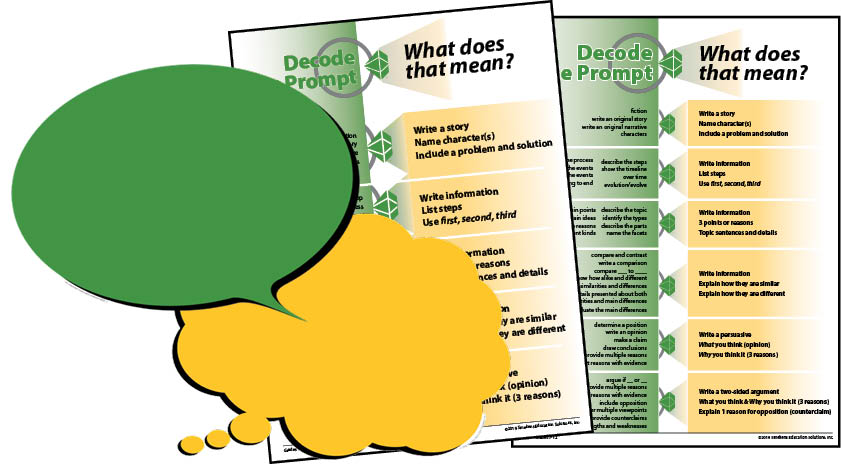
Connected to Reader Voices
Grades 2-6 | Grades 6-12
Target academic vocabulary.
Students cannot accurately answer the question if they don’t understand the complex vocabulary within it.
These close reading questions include the academic vocabulary seen on standardized tests.
Organize syntheses to fit the genre
Visualize body paragraphs based on genre and text structure.
Stack several constructed responses.
The Yes, MA’AM strategy can be adapted
to fit the requirements of an extended reading response.
Stacked Constructive Response Paragraphs | Earth Day
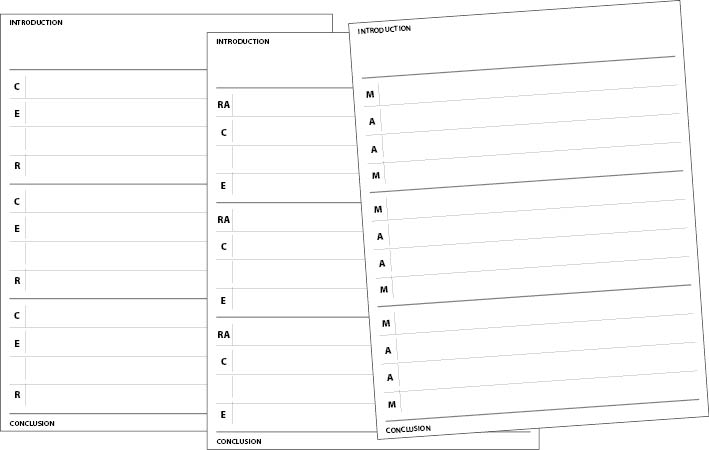
MAAM Google Slide | Jamboard | PDF
RACE Google Slide | Jamboard | PDF
CER Google Slide | Jamboard | PDF
Create a complete product
Readers generate an academic introduction and conclusion.
Rework a prompt to serve as the introductory paragraph
in an extended-reading response.
This Teaching Channel video introduces the parts of an essay, including how to rework the prompt to serve as the introduction.



